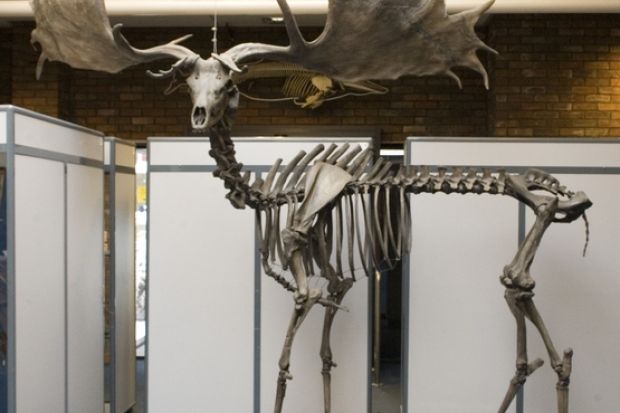This is one of the few complete skeletons of Megaloceros giganteus, the largest member of the deer family known to science.
Though sometimes called an "Irish elk", the animal ranged across Europe and Eurasia and is a close relative of modern deer.
Megaloceros refers to the "giant antlers" used during the rutting season, with females choosing mates who were most successful in fights with rivals.
Its huge body was required to provide muscular support, especially in the neck and shoulders, to manoeuvre these massive weapons.
The species survived until about 7,000 years ago and may have been driven to extinction by humans.
This specimen was probably recovered from the peat bog at Ballybetagh by the Dublin naturalist W. Williams in the 1870s.
It was bequeathed to Durham University's School of Biological and Biomedical Sciences by naturalist G.K. Whitehead, along with a selection of deer-related items including stamps, photographs and china.
Send suggestions for this series on the sector's treasures, oddities and curiosities to: matthew.reisz@tsleducation.com.
